UVARM subroutine in ABAQUS
€ 75.0
“UVARM subroutine in ABAQUS” package teaches how to specify user-defined output variables at all material calculation points of elements for academic and industrial projects.
| Expert | |
|---|---|
| Package Content |
.inps,video files, Fortran files (if available), Flowchart file (if available), Python files (if available), Pdf files (if available) |
| Tutorial video duration |
41 minutes |
| language |
English |
| Level | |
| Package Type | |
| Software version |
Applicable to all versions |
| Subtitle |
English |
Frequently Bought Together
UVARM subroutine in ABAQUS
The “UVARM subroutine in ABAQUS” package teaches how to specify user-defined output variables at all material calculation points of elements.
UVARM Subroutine is one of the subroutines that beginners can start writing subroutine with that. In this training package, you will first get acquainted with when this subroutine has been used and how to use it. Subroutine writers will also learn how to use the subroutine interface. In the UVARM subroutine, you can define output quantities that are functions of any of the available integration point quantities listed in the Output Variable Identifiers table. The introduction of all variables of this subroutine, including input variables and output variables, are examined in this subroutine. In the description of this section, all the parameters are fully presented along with the graphical description.
If you are not familiar with writing the subroutine, you can read these two articles (Fortran ‘Must Knows’ for Writing Subroutines in Abaqus (PART I) for Fortran and Start Writing a Subroutine in Abaqus: Basics and Recommendations to start writing subroutine. The general description of this subroutine should be mentioned in Abaqus Documentation.
workshop-1: Safety factor calculation of Hemispherical Metal with a crack under internal pressure with UVARM subroutine
This workshop has been prepared with the aim of calculating the reliability of a hemispherical metal tank under internal pressure. Initially, geometric specifications, mechanical properties, loading, and boundary conditions are described. The writing subroutine in this workshop is done line by line with all the required tips. The settings required to activate this subroutine are provided in graphical environment software, along with how to extract the results.
workshop-2: 3D Hashin Failure Criterion in Composite Cylinder with a liner under torsion :
In this workshop, first of all, dimensions, mechanical properties, boundary conditions, and loading specifications are introduced. Note that Abaqus software has not suggested any material model in the current version of Abaqus to detect composite damage initiation in continuum elements. Therefore, the purpose of this subroutine in this workshop is to prepare the subroutine to solve this problem in software. To write the subroutine, firstly, the equations of this subroutine are presented along with theoretical explanations, and then the subroutine is written and explained line by line. This subroutine also contains internal subroutines such as GETVRN. The purpose of this utility subroutine is to achieve Abaqus outputs and use them in the current subroutine. The settings required in the graphical environment of the software are also described in this workshop video training.
The Abaqus user subroutine allows the program to be customized for particular applications unavailable through the main Abaqus facilities. You should write a user subroutine if you could not run your analysis by ABAQUS built-in models for materials, loads, properties, elements, etc., for example, if you need to model a user-defined nonlinear stress-strain relation, which is not provided by Abaqus, then look for UMAT user subroutine. A more simple subroutine is DLOAD, which allows the creation of user-defined loads. If it is your first time writing a subroutine like DLOAD, please read the Start Writing an Abaqus Subroutine: Basics & Recommendations article. After reading this post and watching this tutorial’s demo video, you will definitely decide to save time in Abaqus modelling and get this Dloadtraining package. If you have questions, ask here on our live chat on the left side of this page.
- What do we learn from this package?
- Teaching plan and Prerequisites and Next steps
- Package specification
You can watch demo here.
- What are the uses of these subroutines?
- When can it be used?
- Where is the subroutine block?
- What are the different types of variables?
- What are the variables of subroutines?
All the package includes Quality assurance of training packages. According to this guarantee, you will be given another package if you are not satisfied with the training, or your money is returned. Get more information in terms and conditions of the CAE Assistant.
All packages include lifelong support, 24/7 support, and updates will always be sent to you when the package is updated with a one-time purchase. Get more information in terms and conditions of the CAE Assistant.
Notice: If you have any question or problem you can contact us.
Ways to contact us: WhatsApp/Online Support/[email protected]/ contact form.
Projects: Need help with your project? You can get free consultation from us here.
- Online payment: with MasterCard, VisaCard and etc.
- Offline payment: In this payment method, you should pay via PayPal and send your payment receipt as an attached file in the offline payment form.
- via download link After purchase, a download link will be sent to you a zip file included training videos, documents and software files.
- Send us your machine ID
To access tutorial video run the .exe file on your personal pc and send the generated code to [email protected] and wait for your personal code, which is usable only for that pc, up to 24 hours from CAE Assistant support.
Here you can see the purchase process of packages: Track Order
9 reviews for UVARM subroutine in ABAQUS
Clear filtersYou must be logged in to post a review.
You may also like…
Introduction to USDFLD and VUSDFLD Subroutine
In this usable tutorial, the material properties can change to an arbitrary dependent variable. One of the most important advantages of this subroutine is simplicity and applicability. Various and high usage examples are unique characteristics of the training package.
This training package includes 5 workshops that help you to fully learn how to use USDFLD and VUSDFLD subroutines in Abaqus software. By means of these subroutines, you will have expertise redefine field variables at a material point by the solution dependence of standard and explicit, respectively.UHARD Subroutine (VUHARD Subroutine) in ABAQUS
UMAT Subroutine (VUMAT Subroutine) introduction
This package is usable when the material model is not available in ABAQUS software. If you follow this tutorial package, including standard and explicit solver, you will have the ability to write, debug and verify your subroutine based on customized material to use this in complex structures. These lectures are an introduction to write advanced UMAT and VUMAT subroutines in hyperelastic Martials, Composites and Metal and so on.
Watch Demo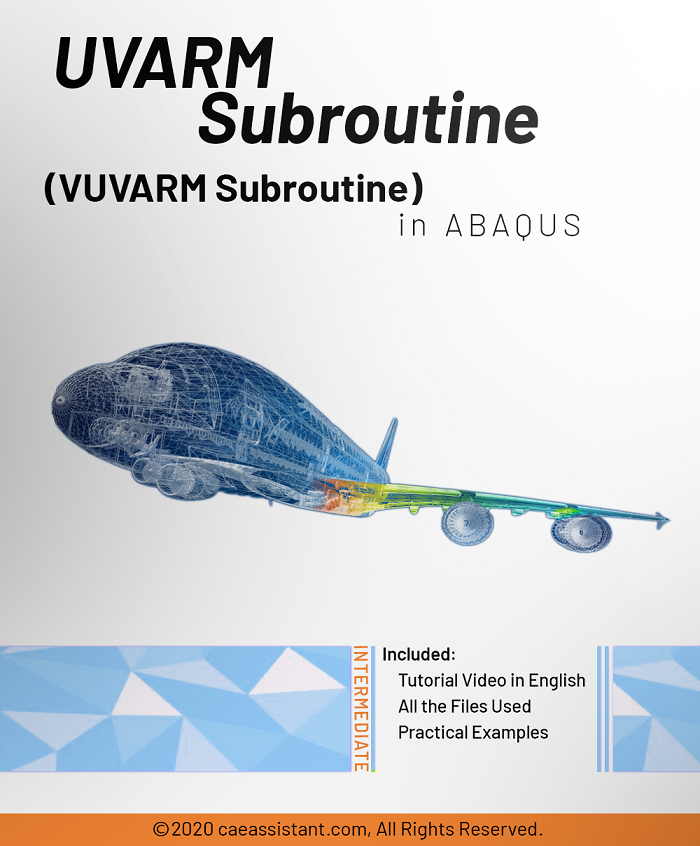
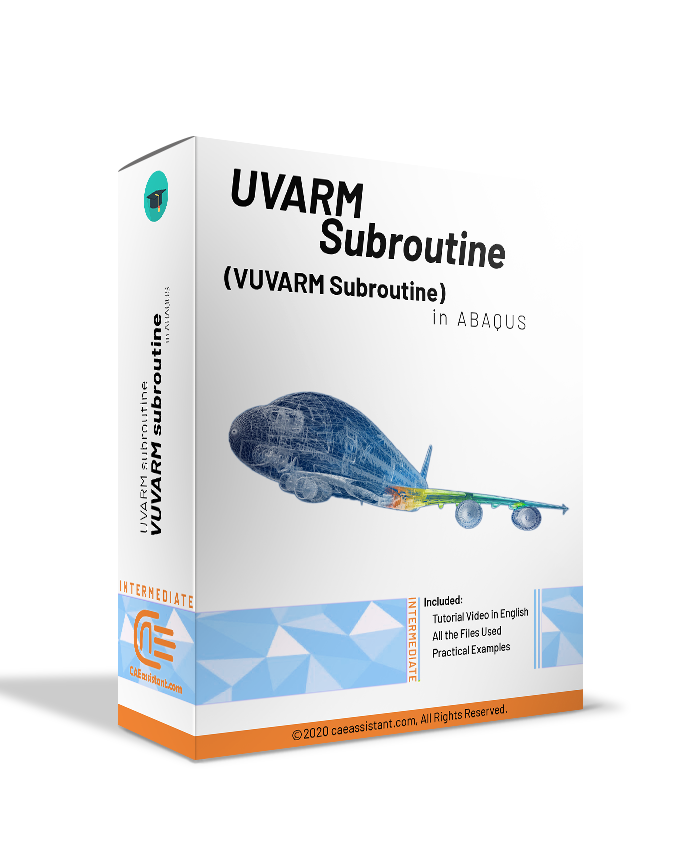
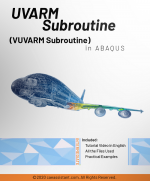
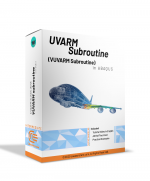
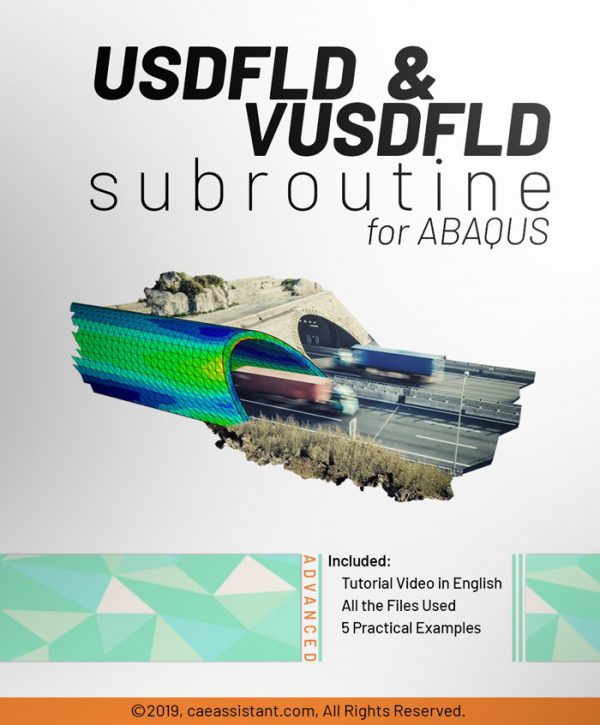
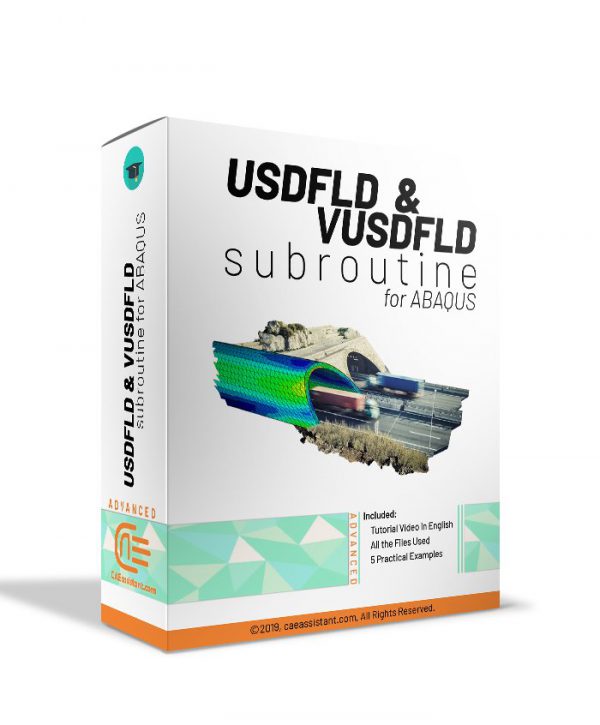
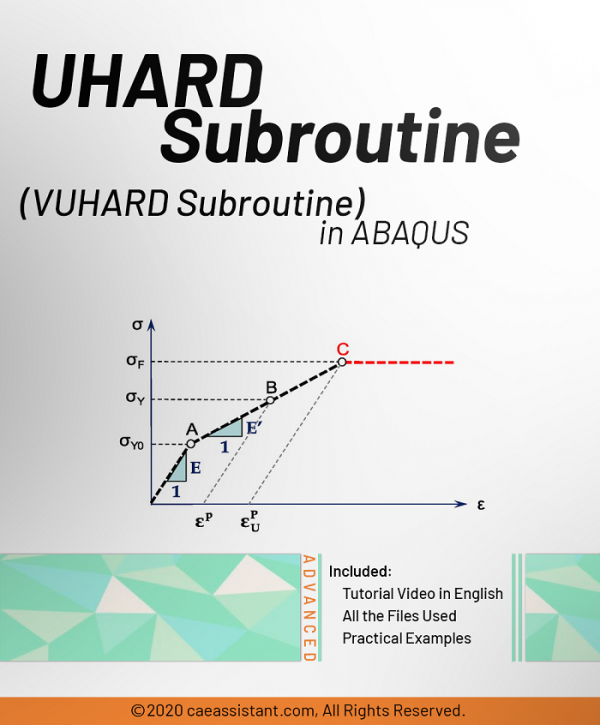
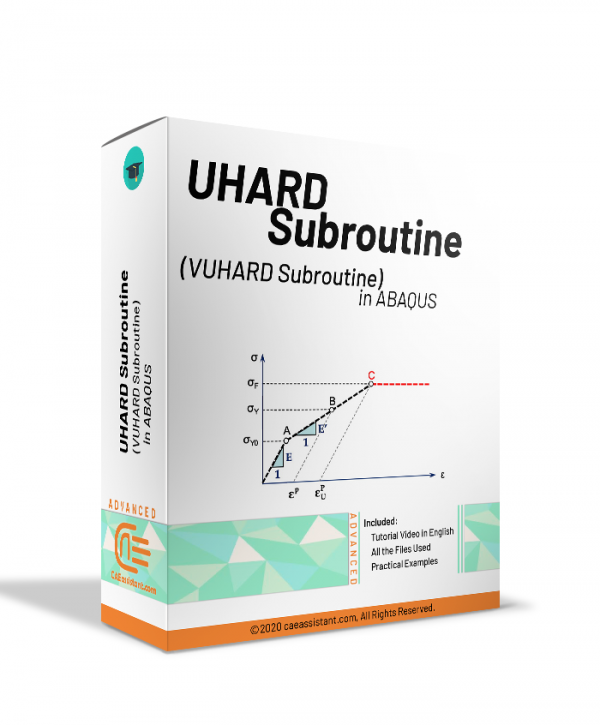
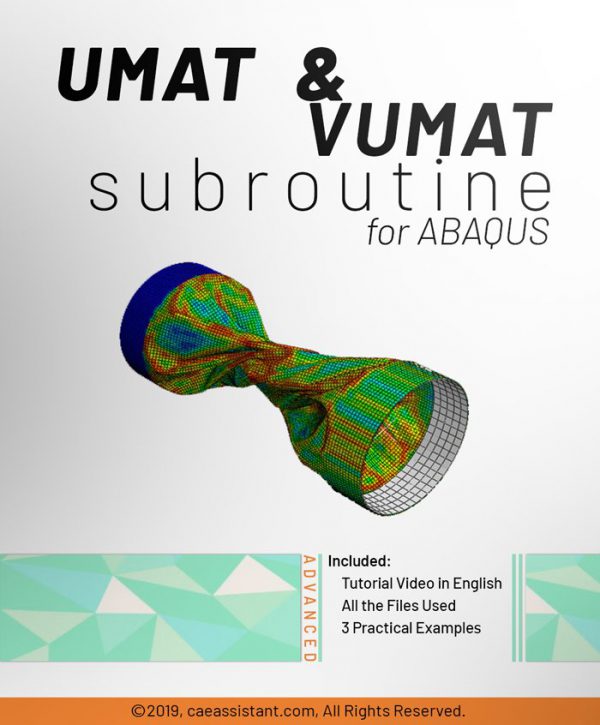
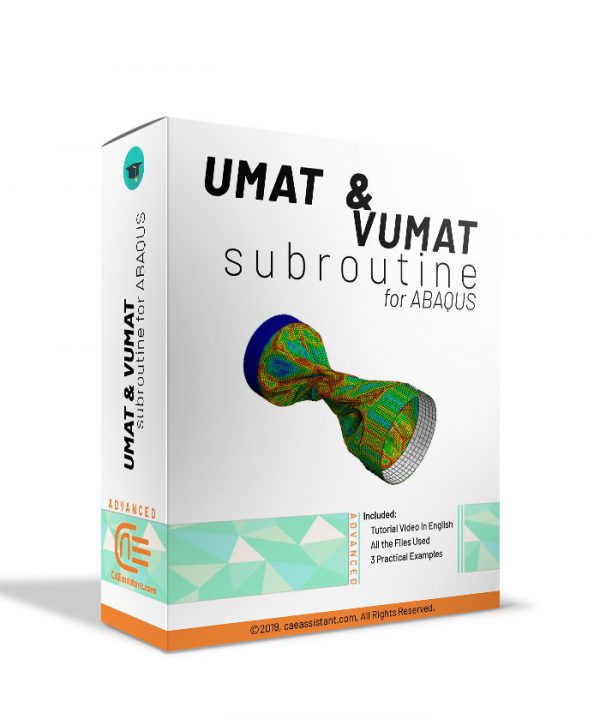
Hakim Benyamina –
Helped me to simulate my project. I recommend this package for those who want to extract a specific output from subroutine. Thank you
Vladymyr Bondarenko –
It helped me to implement the 3D Hashin criterion for damage initiation in Abaqus. However, I want to implement progressive damage behavior based on the mentioned theory for 3D continuum element. can I use UVARM to do that?
alami97 –
Hi, why there are no description for workshops or some preview or pictures of workshops? I think it is necessary for anyone who wants to get this package.
tess.mayer-2232 –
Just what I needed for my project. Is there another package that teaches other subroutines?
Jakub97 –
I recommend this to anyone looking for a organaized and proffesional tutorial videos. I mean it dosen’t hurt to spend some in professional education.
hugo –
Where is the demo video? When I click on it, it just opens the current page!